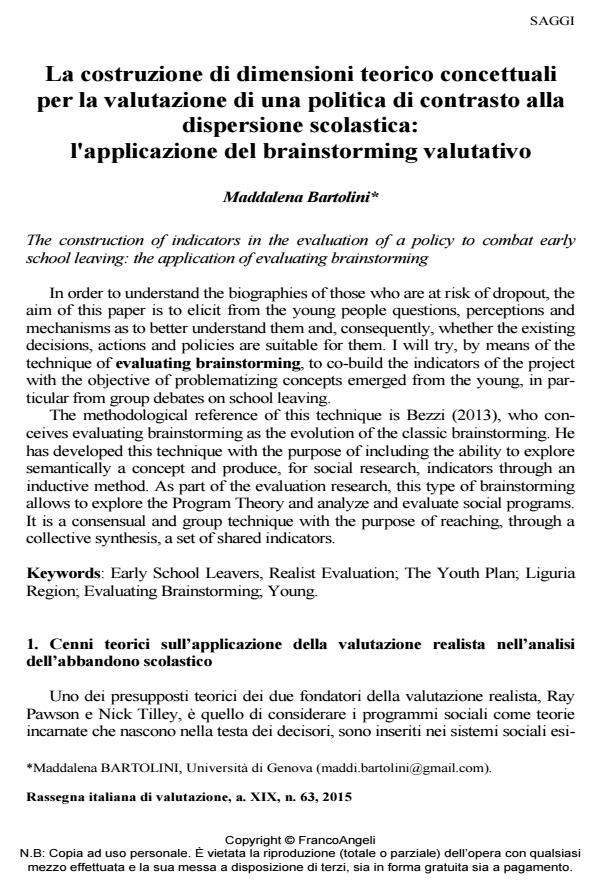The construction of indicators in the evaluation of a policy to combat early school leaving: the application of evaluating brainstorming
Journal title RIV Rassegna Italiana di Valutazione
Author/s Maddalena Bartolini
Publishing Year 2016 Issue 2015/63
Language Italian Pages 20 P. 83-102 File size 447 KB
DOI 10.3280/RIV2015-063006
DOI is like a bar code for intellectual property: to have more infomation
click here
Below, you can see the article first page
If you want to buy this article in PDF format, you can do it, following the instructions to buy download credits

FrancoAngeli is member of Publishers International Linking Association, Inc (PILA), a not-for-profit association which run the CrossRef service enabling links to and from online scholarly content.
In order to understand the biographies of those who are at risk of dropout, the aim of this paper is to elicit from the young people questions, perceptions and mechanisms as to better understand them and, consequently, whether the existing decisions, actions and policies are suitable for them. I will try, by means of the technique of evaluating brainstorming, to co-build the indicators of the project with the objective of problematizing concepts emerged from the young, in particular from group debates on school leaving. The methodological reference of this technique is Bezzi (2013), who conceives evaluating brainstorming as the evolution of the classic brainstorming. He has developed this technique with the purpose of including the ability to explore semantically a concept and produce, for social research, indicators through an inductive method. As part of the evaluation research, this type of brainstorming allows to explore the Program Theory and analyze and evaluate social programs. It is a consensual and group technique with the purpose of reaching, through a collective synthesis, a set of shared indicators.
Keywords: Early School Leavers, Realist Evaluation; The Youth Plan; Liguria Region; Evaluating Brainstorming; Young
- Nutrire la relazione educativa: la formazione degli adulti di riferimento come leva per l'empowerment giovanile. Maddalena Bartolini, Valentina Lamonica, in RIV Rassegna Italiana di Valutazione 91/2025 pp.9
DOI: 10.3280/RIV2025-091002
Maddalena Bartolini, La costruzione di dimensioni teorico concettuali per la valutazione di una politica di contrasto alla dispersione scolastica: l'applicazione del brainstorming valutativo in "RIV Rassegna Italiana di Valutazione" 63/2015, pp 83-102, DOI: 10.3280/RIV2015-063006